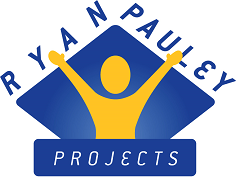Few technological innovations have created such a stir in educational and creative circles as the Artificial Intelligence chatbots like Chat GPT. Its ability to generate content that can bypass the traditional plagiarism technologies has educational authorities worried. For the oral presentation, it can be argued the benefits outweigh the disadvantages. Here is the reasoning.
The oral is about much more than the content. It requires writing the presentation using spoken language appropriate to the speaker and the audience. It needs appropriate vocal and body language use to reinforce the message. And, it has to be practised so it can be delivered in a convincing manner. Chat GPT cannot do any of this.
What it can do is generate ideas and arrange the content based on instructions provided by you. For example, we asked it to:
‘Write a persuasive speech incorporating an attention-getting opening, an explanation of a problem, a real-world example and a proposed solution with a conclusion that has a link back to the opening and a call to action.’
It provided responses that matched this requirement. The first two were too bland to be useful, but the third generated response was quite acceptable. It would still require rewriting because:
- The content is quite generic and would need to be made more relevant with specific local references and updated information. (Chat GPT says it is unreliable for any very recent information.)
- The language would need to be made more conversational with some changed sentences and the addition of some speaking devices.
So, Chat GPT has really only acted as an idea generator. It has provided what could be considered to be a ‘rough draft’ but would still require rewriting.
This is why Chat GPT can be a valuable tool for oral presentations. It is really only replacing the research work the student would do. This could be a real advantage in directing students away from the overloaded ‘data dumps’ that many write and in freeing up more time for preparation of the non-verbal components.
By the way, if you’re interested in the speech generated, here it is:
Opening: Imagine a world where every person has access to clean, safe drinking water. Now, imagine a reality where millions of people lack access to this basic human right. This is the world we live in today.
Problem: The lack of access to clean drinking water is a global crisis that affects millions of people every day. In many developing countries, water sources are contaminated with disease-causing bacteria and viruses, making it impossible for people to drink without falling ill. This is not only a health issue, but it also has a significant impact on economic development and education.
Example: One real-world example of this problem is in the rural areas of sub-Saharan Africa. In many parts of this region, the only available water sources are ponds and rivers, which are often contaminated with faecal matter and other pollutants. This means that people who rely on these sources for drinking water are at a high risk of contracting water-borne illnesses such as cholera and typhoid fever. This not only affects their health but also have a negative impact on their children’s education and ability to work.
Solution: To address this problem, we need to invest in sustainable solutions that provide clean drinking water to communities in need. One example of this is the use of bio-sand filters, which are low-cost, low-maintenance, and highly effective at removing bacteria and viruses from water. By providing these filters to communities in need, we can help to improve the health and well-being of millions of people.
Conclusion: Clean drinking water is a basic human right and a necessity for life. We have the power to make a change, and by investing in solutions such as bio-sand filters, we can ensure that every person has access to clean, safe drinking water. Let’s work together to make this a reality, and imagine a world where everyone has access to this essential resource. So, let’s take action now and make a difference in the world.
Call to action: I urge you to support organisations that work to provide clean drinking water to communities in need, and to advocate for increased investment in sustainable solutions such as bio-sand filters. Together, we can make a difference and ensure that clean drinking water is accessible to all.

Recent Comments